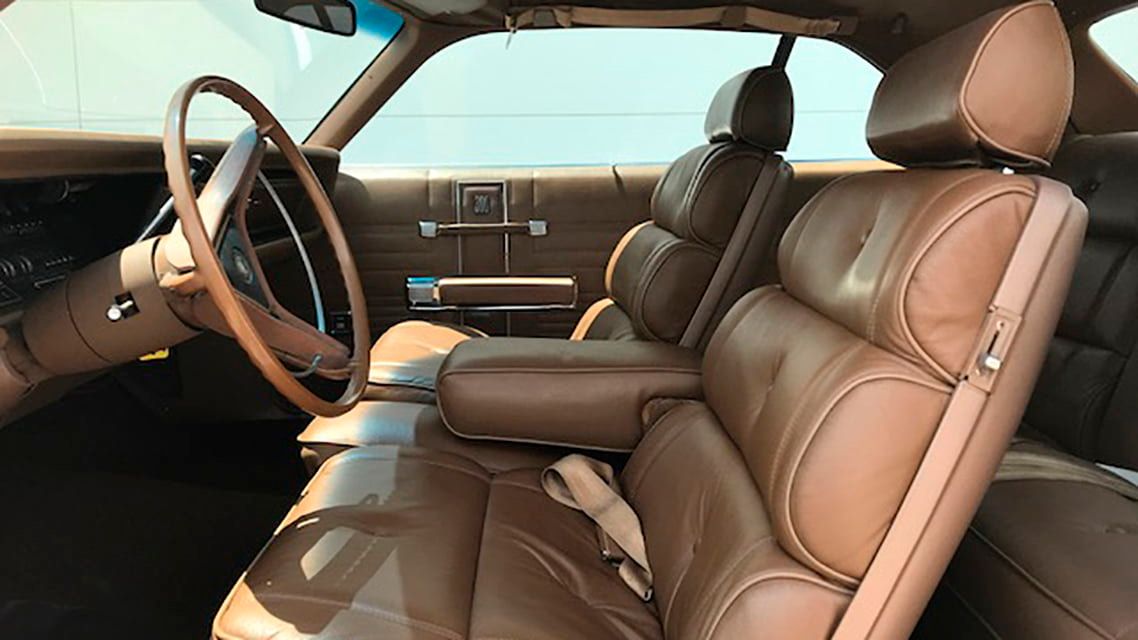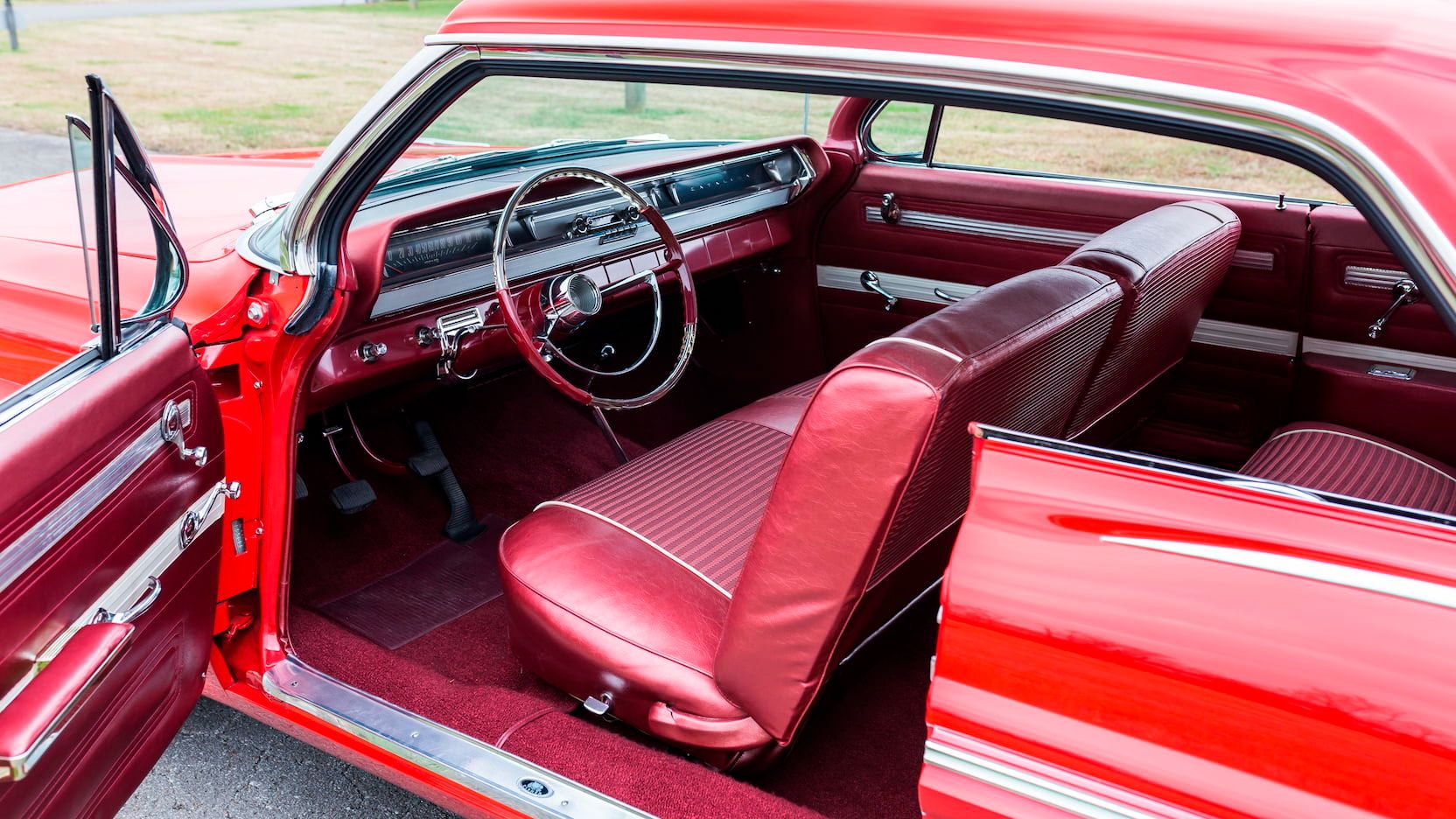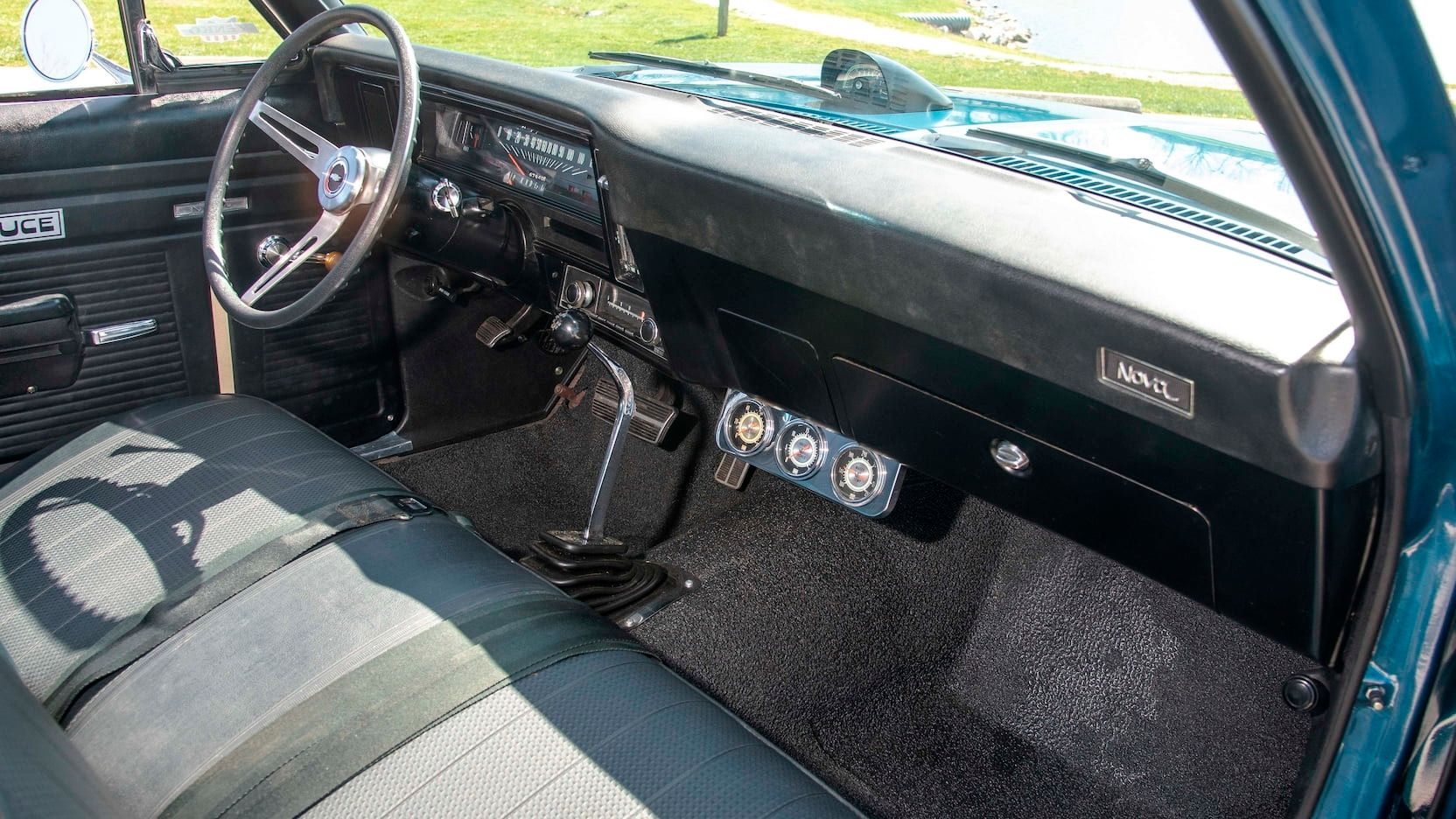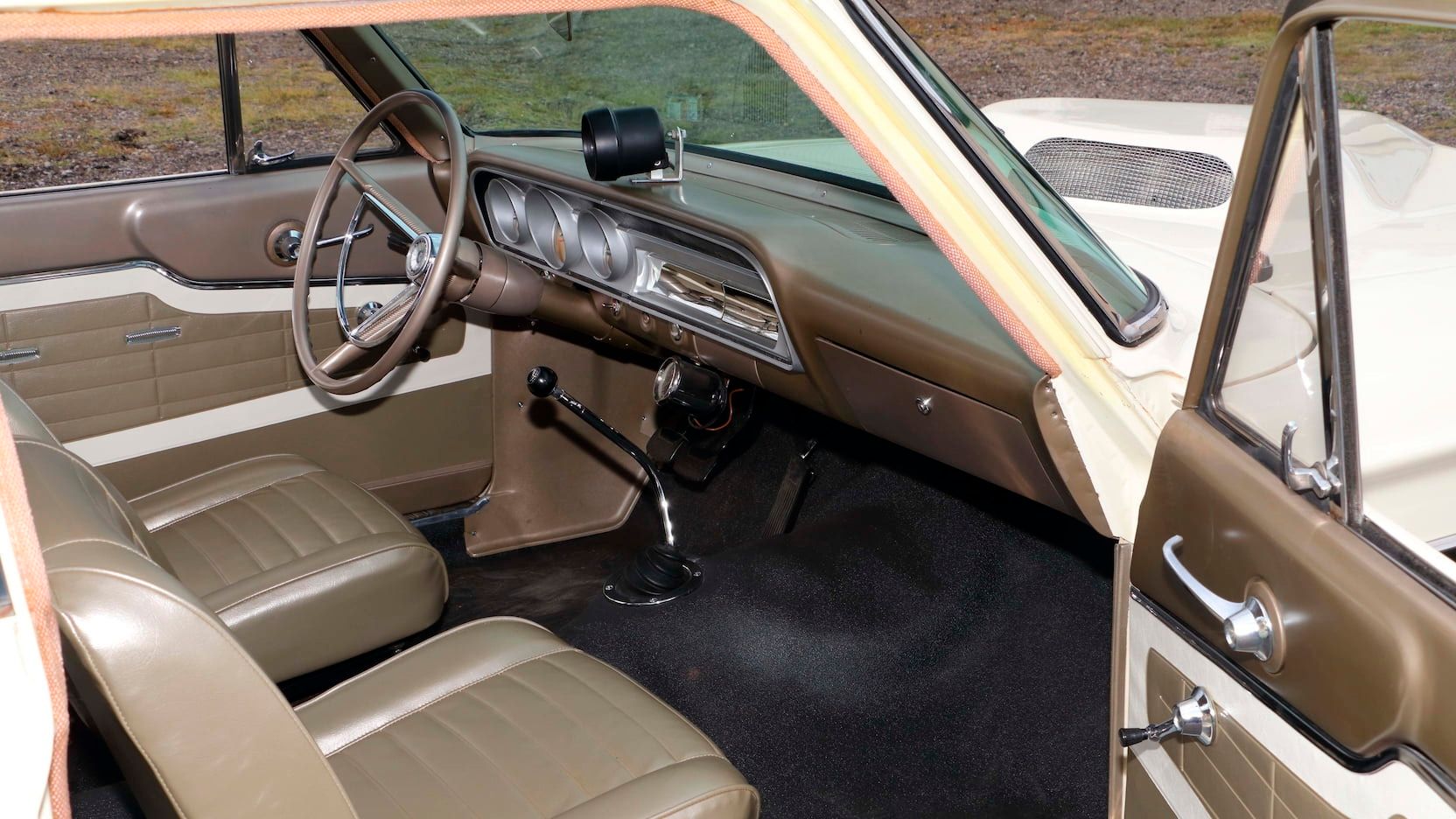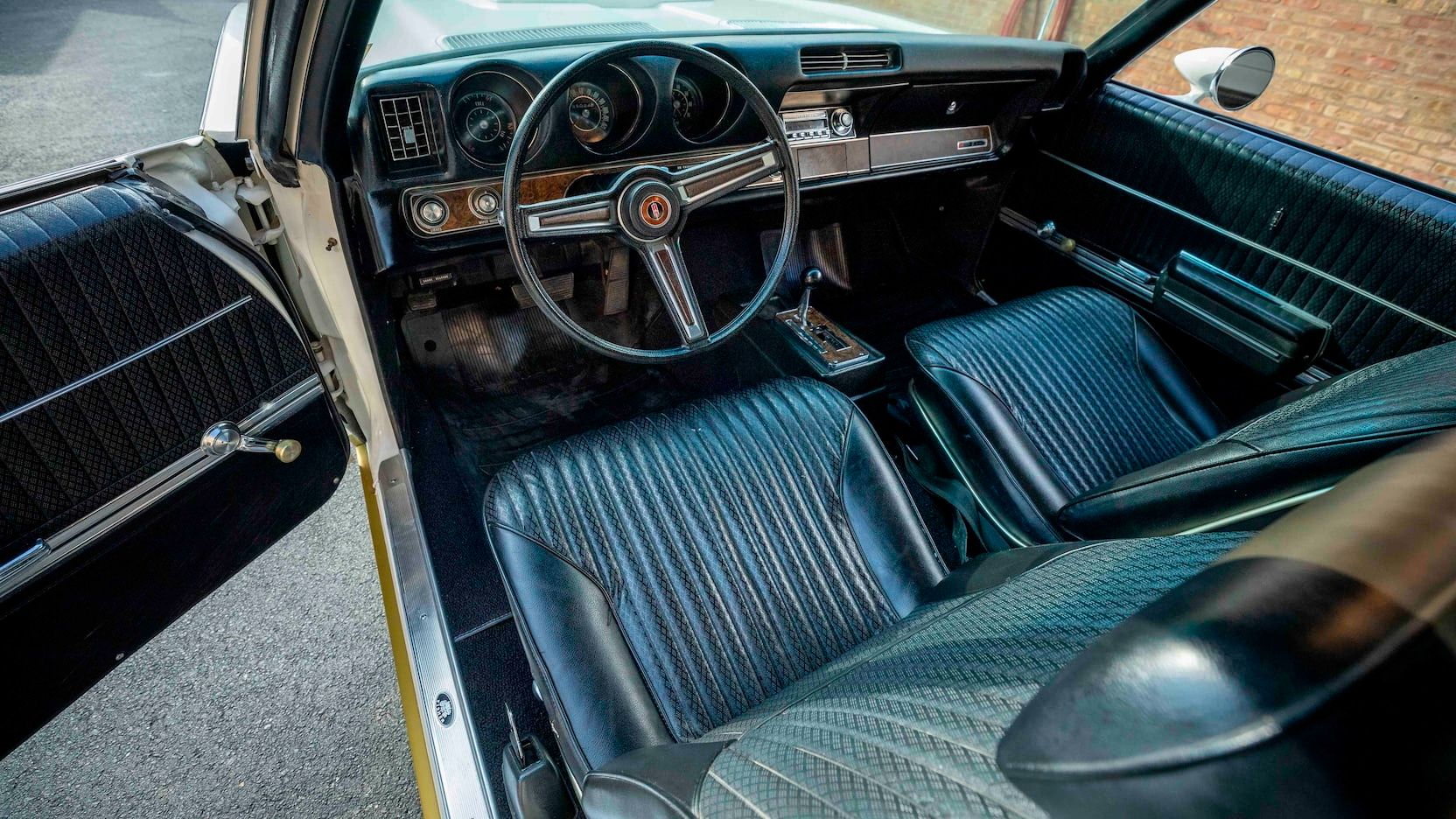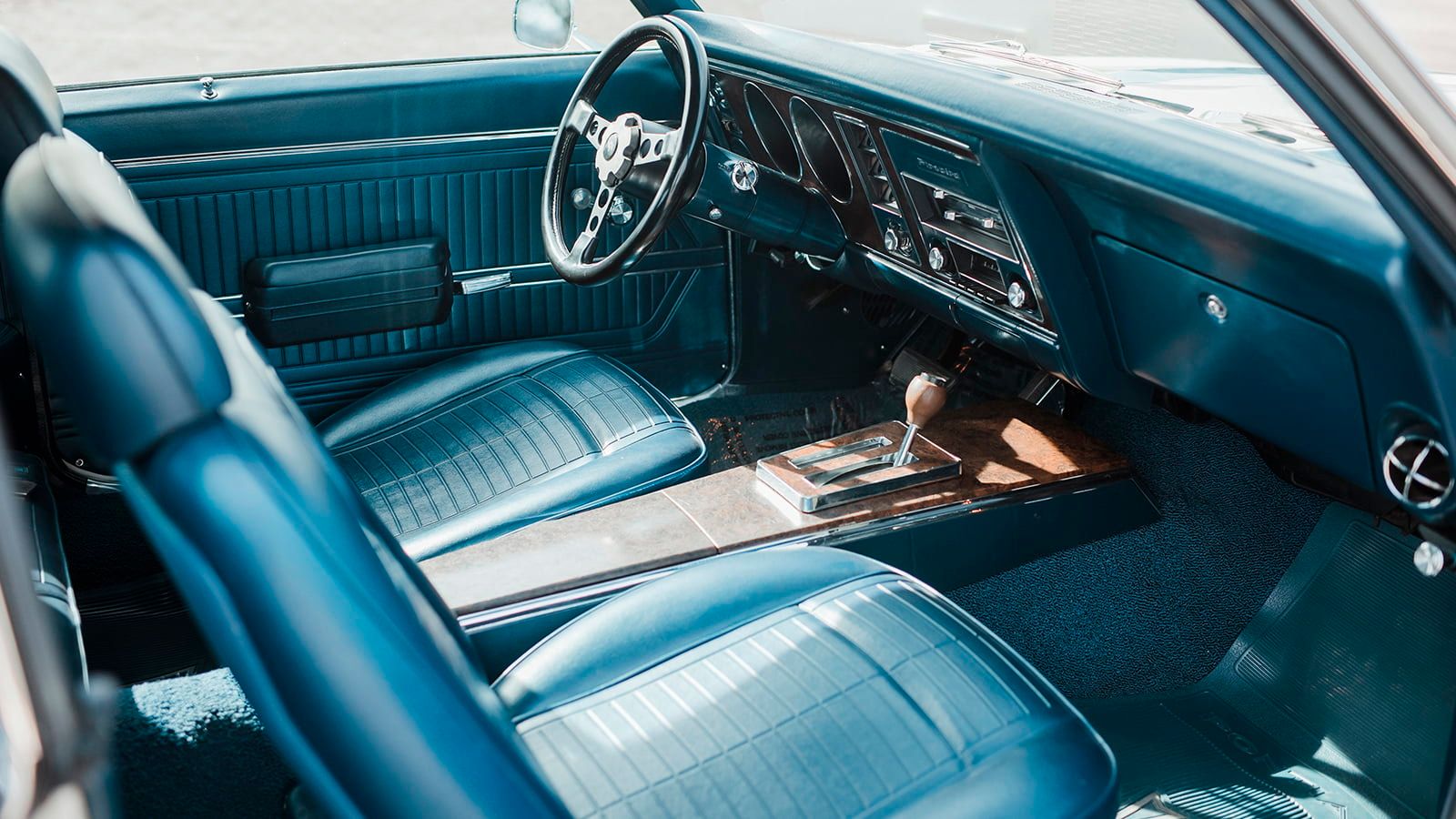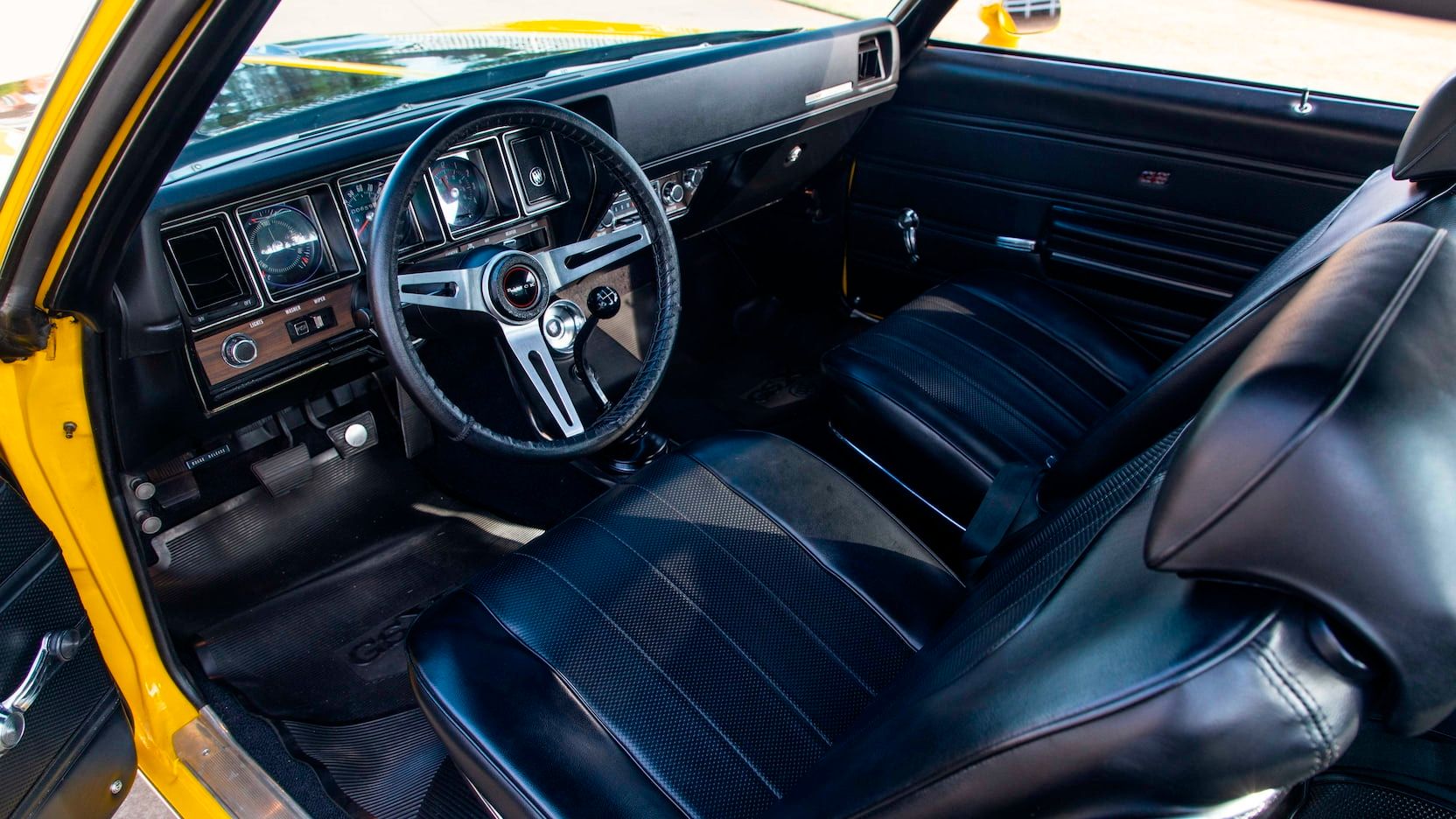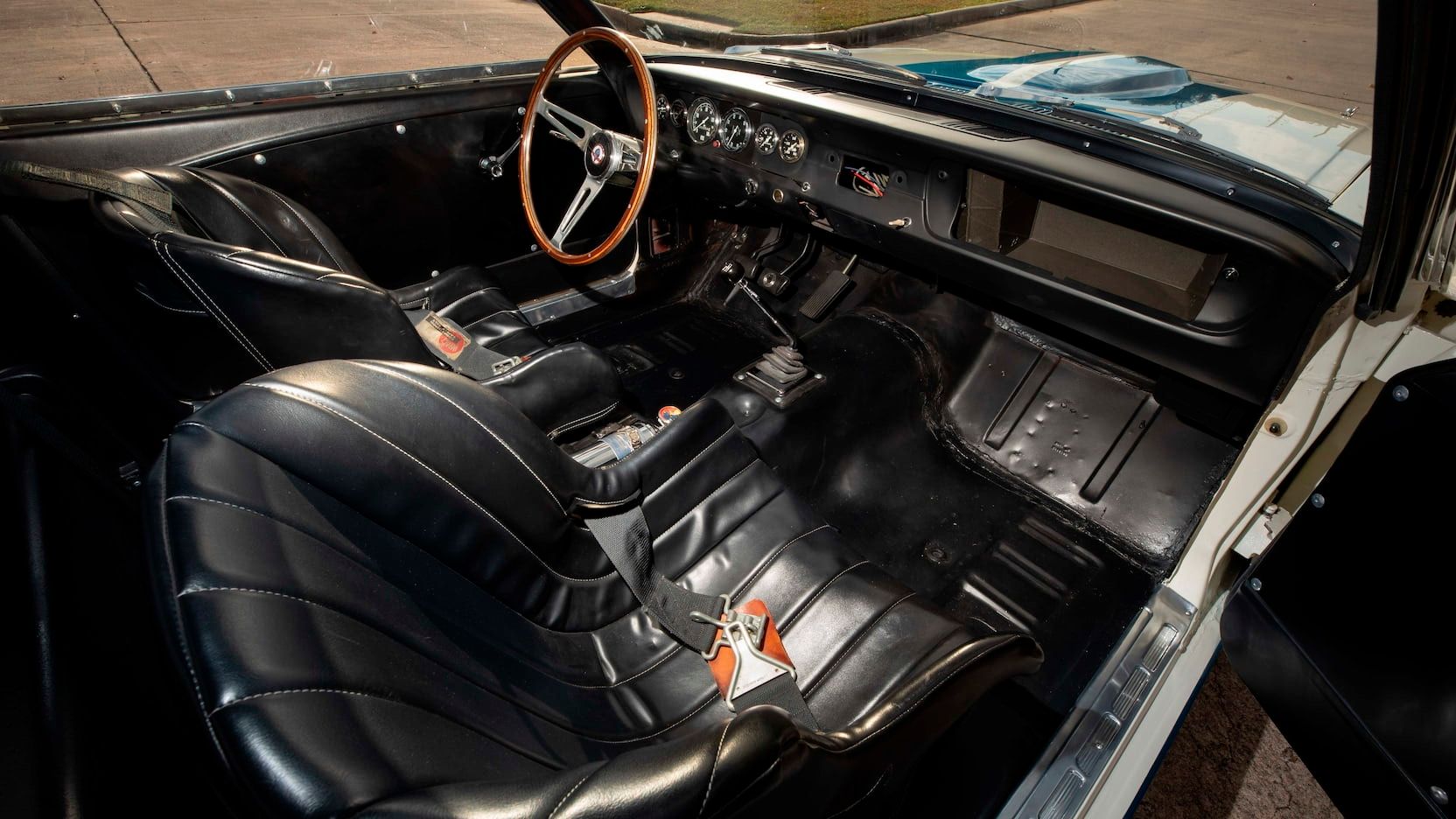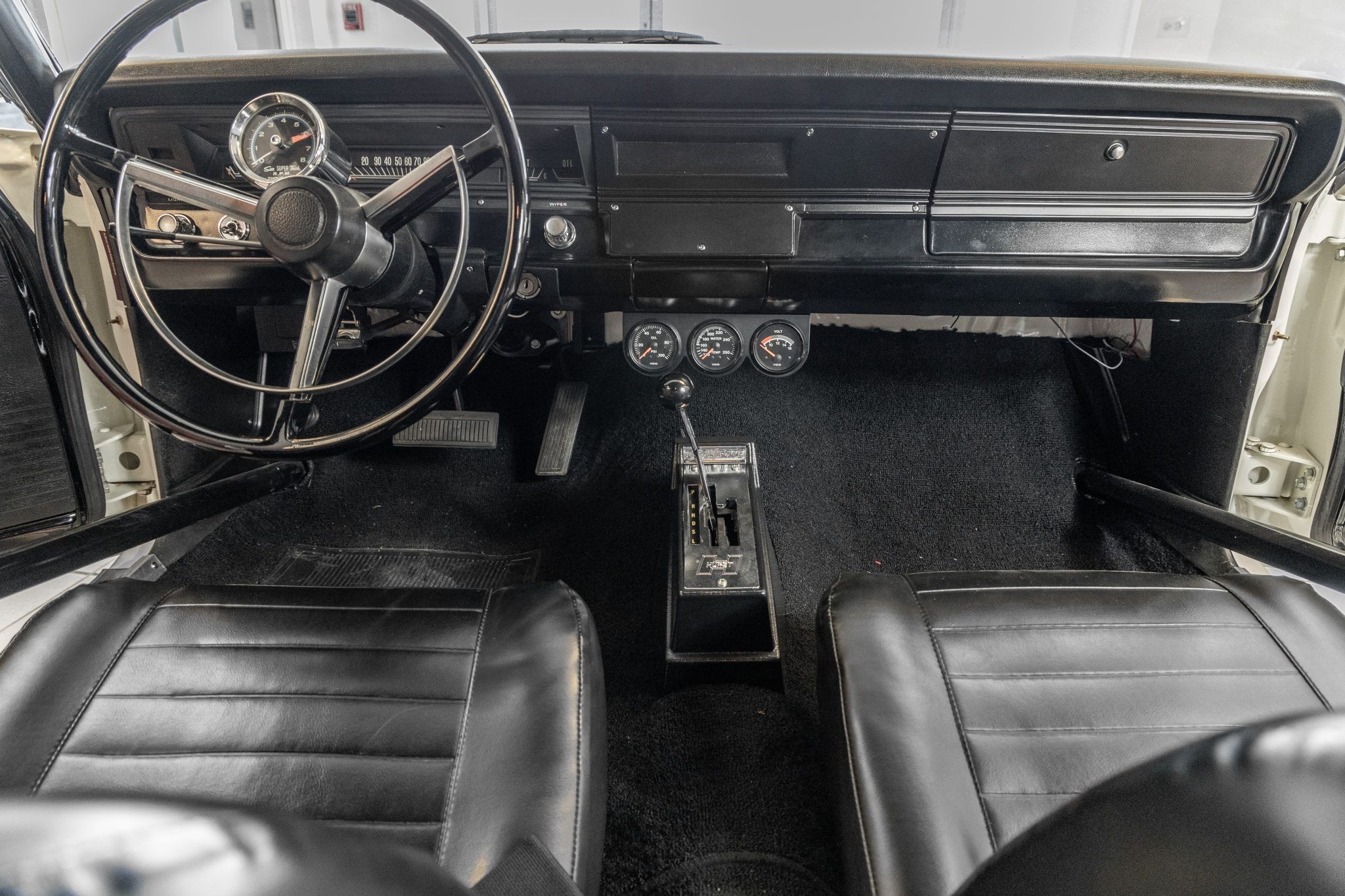American muscle cars are some of the most sought-after vehicles in existence. With boxy lines and big power, it’s easy to see why their appeal resonates so much with enthusiasts. However, when it comes to the topic of interiors, this hasn’t exactly been a strong point for muscle cars.
Most classic muscle cars were heavily based on some fairly mundane cars, often sharing platforms with various family sedans and other basic forms of transportation. The entire concept of a muscle car was designed to bring affordable performance to the budget-minded consumer, which is exactly why several of these muscle machines share various components with lesser models of their respective brands. While classic muscle cars had much to offer in terms of displacement and horsepower, they still found themselves packing a multitude of conventional parts, and the interior was no exception. Most had the same, basic interiors as the lower-end variants of their respective platforms, although this wasn’t always the case. With that said, it doesn’t necessarily take much for a classic muscle car’s interior to stand out from the rest of the herd, as you’ll see within our list of the top ten muscle car interiors of all time.
10 1970 Hurst Chrysler 300
While the Chrysler 300 itself is often seen as a bulbous, land barge with little to offer in the realm of performance, the Hurst Edition of 1970 aimed to change that, and consequently transformed the 300 into a full-sized muscle car.
Packing Mopar’s 440-cid Magnum V8, the 1970 Chrysler 300 Hurst was good for 375 HP, putting it on par with the likes of the Dodge Charger and Plymouth Barracuda with the same drivetrain package. The 300’s immense weight, however, would certainly keep it at a slower pace than its counterparts, although that’s not to say that these cars weren’t still fast in their own right. On the inside, however, is where the 300 Hurst stands out. With enormous benches, these cars could easily seat six people comfortably. Furthermore, the 300 Hurst was host to an array of rich leather, power windows, power steering, power brakes, air-conditioning, and a multitude of other creature comforts that weren’t typically associated with other muscle cars of its day.
9 1962 Pontiac Catalina 421 Super Duty
The 1962 Pontiac Catalina Super Duty was essentially a factory-built drag racer, but disguised with the appearance of the typical Detroit iron from its era. Don’t be fooled, as this massive Pontiac features an aluminum hood and front fenders to help shed a few pounds from the hulking 421-cid V8 lurking underneath. With forged rods, crankshaft, and pistons, the 421 Super Duty was built to undergo serious abuse. Dual Carter 4-bbl carburetors and a compression ratio of 11:1 gave these old Catalinas a factory rating of 405 hp, although this figure is believed by many to be much closer to 465, as the 1962 Catalina’s equipped with this package were easily running 13-second quarter-miles.
As far as interiors go, the 1962 Pontiac Catalina 421-SD shares much in common with its lower-end counterparts, which isn’t necessarily a bad thing. Being an early-1960s car, these Catalinas carry a much different style than other muscle cars from years later, which only adds to the inherent character of such a powerful machine. All told, only 142 of these cars were ever produced, making them exceptionally rare, as well.
8 1970 Yenko Nova Deuce
Originally, the Chevy Nova was never intended to be much more than a standard, economy car. The Nova itself emerged prior to the muscle car wars as a more conventional alternative to the ill-fated Corvair, which had been acting as Chevrolet’s main compact during its heyday. Nonetheless, by the late-1960s, the Nova was finding itself packing big-block engines for war at the drag strip.
The legendary Yenko S/C cars took performance to an entirely new level for the Nova, as Pennsylvania’s famed Yenko Chevrolet began dropping 396 and 427-cid engines into these cars, making astounding power for these compacts. The interiors also received some distinct touches in the form of various Yenko badges, aftermarket gauges, and Hurst shifters for the four-speed versions. Although they’re by no means the most luxurious car interiors on this list, the Yenko Nova provides a starkly adorned cockpit with no frills, which is prime for drag racers seeking to minimize weight.
7 1964 Ford Fairlane Thunderbolt
The Ford Fairlane Thunderbolt was a drastically underrated factory racing car, which was built in utilitarian fashion for one sole proprietor purpose; acceleration. The entire project housed Ford’s coveted 427-cid FE V8, which underwent severe modifications for the Thunderbolt. Although rated at 425 HP, some experts predict that the engine’s true output was much closer to the 600 mark, which helped the Thunderbolt win the NHRA’s 1964 Super Stock Championship.
In the cockpit, you’ll find nearly nothing without purpose. No radio, no power windows, no power door locks, not even climate control. The 1964 Ford Fairlane Thunderbolt was purpose-built for the drag strip, and lacked virtually anything that would add dead weight to the recipe. This is exactly why this car has one of the best muscle car interiors of all time, it’s straight and to the point.
6 1964 Buick Riviera
The original Buick Riviera was built to compete against the Ford Thunderbird on the realm of personal luxury, and did so with elegant grace and raw power. On top of their stellar styling and crisp lines, the Riviera came outfitted with Buick’s 425-cid Wildcat V8, making these capable muscle cars, although with far more options than what would become the norm by the end of the decade.
On the inside, the Buick Riviera was built to impress. Aside from the thick, leather-laden bucket seats, the first-gen Riviera also offered interesting gadgets such as a power antenna and electronic trunk release, which were highly novel for their day. Combined with all the other power amenities of the Riviera, it’s obvious that this was never meant to be a serious muscle car, as luxury was the prime goal. However, because of which, the 1964 Buick Riviera offered one of the most luxurious and well-equipped interiors out of all the 1960s muscle cars.
5 1969 Hurst/Olds Cutlass
Despite the heavy completion, Oldsmobile still played a crucial factor in the evolution of the American muscle car, and a key factor in this process was their partnership with Hurst, which had originally begun in 1968. By 1969, Hurst had again tuned the Oldsmobile Cutlass into a pure monster, offering a spine-numbing 500 lbs-ft of torque from its 455-cid V8.
Oldsmobile, however, opted to make these cars a tier above the mundane Chevrolets, as was their role in the vast lineup of General Motors cars. One interesting touch that Hurst implemented was the use of their Dual Gate shifter. Although these cars came equipped with TH400 automatics, the Hurst unit allowed drivers to shift in a semi-automatic fashion from first to third, allowing for more control during quarter-mile runs.
4 1969 Pontiac Trans Am
1969 was the first year of the Pontiac Trans Am, which was named to honor the Trans Am Series of road racing which was highly popular during this time. The Pontiac Trans Am, sadly, was ineligible to compete in which, as its 400-cid V8 was well over the maximum displacement restriction of 302-cid/5 liters. Nonetheless, these early Trans Ams were built to show off, with all of which sporting Cameo White paint jobs and blue interiors.
Those interiors certainly kept the theme of speed in mind, adorned with bucket seats, center consoles, floor shifters, and all the other standard amenities for muscle car status. On top of which, the steering wheels offered a distinct design which would become the trademark for which for over a decade later. Altogether, the 1969 Pontiac Trans Am provided a muscle car interior that ranks among the very best.
3 1970 Buick GSX Stage 1
1970 is considered by some to be one of the peak years of American muscle cars, which saw engine technology reaching an all-time high, just before government regulations and environmental concerns would ultimately cut power figures in half for nearly all of these incredible machines. Buick was no different, with their GSX taking center stage as the brand’s halo car, offering a well-rounded mix of luxury and muscle.
On the inside, the GSX was in cue with Buick’s role as General Motors’ second-highest tier. The 1970 Buick GSX has an interior that represents a certain sense of maturity, taking a stately approach to the otherwise-spartan style of muscle cars. The hood-mounted tachometer might not exactly be an interior part, technically, but it’s a slick gimmick that definitely completes the package.
2 1965 Shelby GT350R
Even though Ford Mustang sales were soaring in 1965, the big brass at the Blue Oval was well aware that their then-new pony car would be in dire need of serious work to be taken seriously among the growing herd of muscle cars that were sweeping the country in full force. Once again, Shelby American came to the rescue, with engineers Ken Miles and Chuck Cantwell transforming the humble Mustang into a race-ready beast; the Shelby GT350R.
This is essentially a racing car in its purest form, and the cockpit is profoundly evident of which. While most muscle cars of the 1960s had been aimed at drag racing, the Shelby GT350R was a purpose-built road racer, which would ultimately transcend the lines between muscle car and sports car.
1 1968 Dodge Dart Super Stock
The 1968 Dodge Dart Super Stock is probably the absolute apotheosis of a classic muscle car. These insanely rare Mopars were built in conjunction with Hurst, and were aimed to create the ultimate drag racing machine, straight from the showroom floor. The Dodge Dart Super Stocks were excessively lightened, utilizing thin-plated glass, fiberglass panels on the front end, and were void of virtually any comfort amenities, all in the name of speed. The legendary 426-cid Hemi was available under the hood, fitted with dual quads, a cross-ram intake manifold, and a compression ratio of 12.5:1.
The interior of the 1968 Dodge Dart Super Stock is sparsely adorned, to put it mildly. Aside from the seat cushions and carpeting, virtually nothing is present that’s not absolutely necessary for blistering runs down the quarter-mile. The Dodge Dart Super Stock likely has one of the best muscle car interiors ever conceived, as it’s all-business attitude is more than appropriate for the breed.
